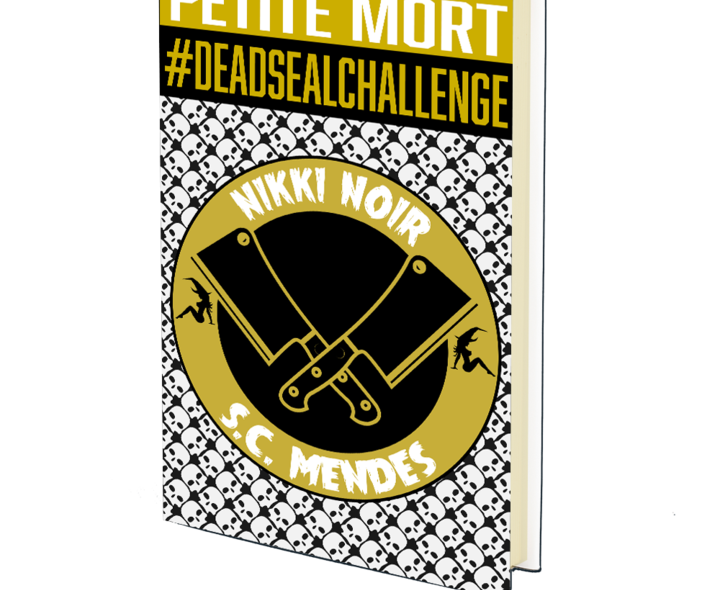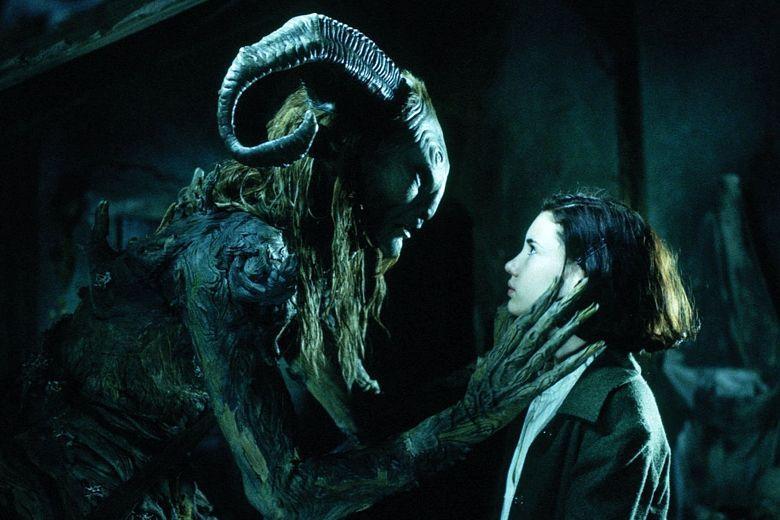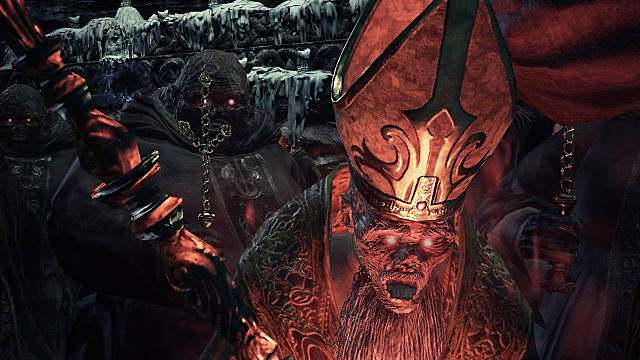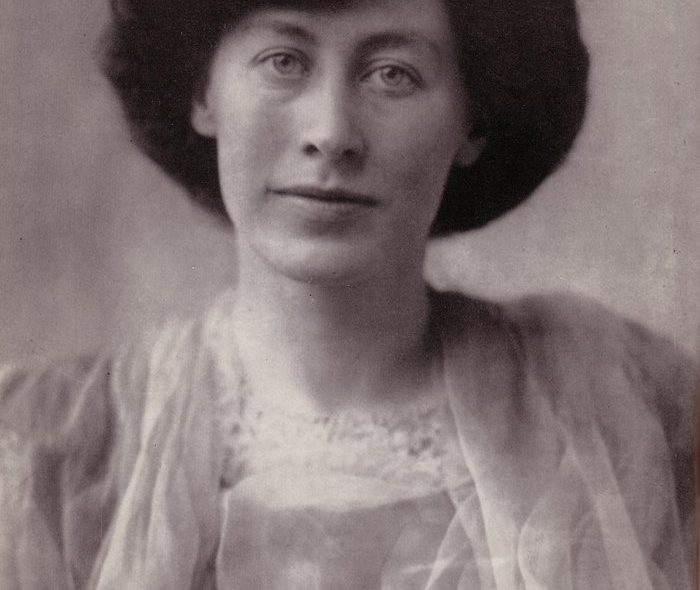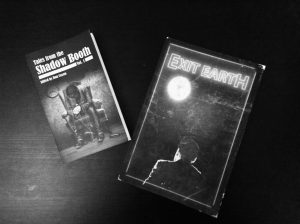And we’re back! Like a slippery thing from the grave, the Cathedral of the Deep series returns for its third installment. Thank you to everyone who sent me kind messages about these talks; it was wonderful to hear how the classes had benefited writers and helped them finish stories they were struggling with, or given them ideas for new stories!
To recap, in parts one and two of this talk, we looked at how we can define Gothic, and how to write a Gothic opening, respectively. We covered the four key elements of Gothic: mood, architecture, religion, and lyricism. We also looked at opening lines, and how they work in relation to the rest of a piece. We also looked at the five act structure.
Today, we will specifically be looking at endings, which is the fifth act of the five act structure: catharsis. Catharsis is something that is quite difficult to grasp without a concrete definition. The Oxford dictionary defines it as: “the process of releasing, and thereby providing relief from, strong or repressed emotions.” The secondary definition is “purgation”. I think the word “release” is most helpful here. Catharsis is the moment of “release” at the end of a film, poem, story, piece of music, whatever the medium is. We have experienced something terrible, something that has taken a hold of us, and then are freed from it, often through tears.
Now, in order to talk about catharsis and endings, I’m going to need to talk about plot, so inevitably I’m going to be spoiling certain shows, books, and stories. There’s no way around it. So, steel yourselves friends! Spoilers are coming!
LOSS & GAIN
Before we can talk about catharsis, we need to talk more broadly about how endings work. I’m going to give you one of my best-ever pieces of advice for ending a story – any story. It’s from Tristine Rainer’s book Your Life As Story, where she says: the definition of a climax is that something is lost so something can be gained. It should be noted that this doesn’t have to be literal. For example, in a Romantic Comedy, a character’s pride might die so that they can become a better person and their love might live. In Fantasy novels and films, often one of the heroes must make a sacrifice and give their own life so that others might live and return home after their adventures to a joyful and healed world. To use a Gothic example: Dracula is the epitome of this. The heroic American Quincy P. Morris perishes in the final assault on Dracula, giving his life so that the curse of Dracula might be abated. In Wuthering Heights, Heathcliff must lose his sight (the distractions and corruption of appearances and social ideals) in order to truly find love with the one who is right for him: Catherine.

It is vitally important that the ending has both something lost and something gained. Often, when endings “don’t work”, it’s because the balance is wrong. Nothing is lost, but the heroes all manage to save the day without a single consequence. There’s no threat, there’s no significance, there’s no reality. Or, the other way, where everything is lost, and the gain is so minimal that it is meaningless. Increasingly, with the advent of modernist ideologies and criticism of heroic narrative, films are looking to the “hopeless ending”. The recent horror movie Hereditary is one such example, although there is arguably a small nugget of “gain” in that the daughter, Charlie, realises her true purpose in the world. However, in my view it does not land with the sledgehammer of emotional resonance for this reason: The balance is wrong.
There is a phrase I hear a lot among my fellows which is: “The movie earned that ending”. I like it a lot, because it exactly encapsulates this ending theory: you have to pay a price to gain something.
Exercise 1.1
So, when you are thinking about your short story, or whatever project it is (and it even works for music – though they call it “counterpoint”, and it is to do with the relationship between harmony and disharmony), ask yourself this important question: what is lost so what can be gained?
Create a table, with two columns, one entitled “loss” and the other “gain” and make a full list of everything in your narrative that is lost and gained. Now ask yourself whether the balance is right. If you are going for a bleaker, darker story: then more needs to be lost. If you are going for a more up-beat story, then more needs to be gained.
FRAMES & STAGES
So, now that we know this foundation, how can we take this one step further and use this to elicit emotional release? Killing off a beloved character is not a guarantee of emotion by any stretch. Think of how poorly the fifth Harry Potter movie, Order of the Phoenix, rendered the death of Sirius Black in contrast with the books. In the novel, I felt his death (which is the cathartic moment of that book) like a stab wound to the chest. In the films, it was laughable, a side-note. There are many reasons, some technical and some broad, about why the execution was flawed, but the primary one is that the balance was not framed right. Gothic endings, indeed any ending, needs what I call a frame. This is the window through which you are seeing the ending, it is the lens you have placed over your cinematic camera as well as the positioning of the camera itself.
If you imagine the events of your story as transpiring in a mysterious other world, which can only be glimpsed through a window, the window and its frame is how this vision of another world is presented to you. Through another window, things might look quite different. This applies, of course, to the whole story, in one sense, but it is specifically relevant to the end. The other way I think of this is not as a frame but as a stage. If your ending was being performed dramatically (for some of you reading this it may be literally true) then how would it be staged? What type of stage would it be set on? I will be looking at these stages and frames, particularly ones relevant to Gothic, and talking about how they work.
This is not to suggest that this list compiles every ending known to human kind or possible. Of course, there are variations, anomalies, and infinite complexity within (and without) of the framework, but these will certainly help you get started and thinking about your ending. When you have mastered how these work, you can then subvert them for your own end.
THE MIRROR
In True Detective’s iconic first season, there are many complex losses and gains. The killer, in one sense, is lost, which gains closure for many characters and us as followers of the investigation. Rust’s nihilism is lost, which gains a newfound spirituality and hope. The resentment between Rust and his partner Marty is lost – they forgive one another – so their friendship might live. The list goes on, which is why it is so powerful. The moment of catharsis is achieved by having the seemingly invincible, inscrutable, unshakeable Rust Cohle (played by Matthew McConaughey) finally break down with the realisation that there is a life after death and his daughter is waiting for him there with “nothing but that love” – in other words, she has forgiven him. He expects enmity and blames himself for her death – it is what’s haunted him his whole life – but the realisation of this love, something positive after the seemingly endless bleakness of his world, breaks him. In watching his release of emotion, we as an audience are triggered, and our buried emotions are released. This frame is what I call the mirror. We witness the moment of catharsis and are moved ourselves. Rust’s loss of hopelessness, by realising there is hope in life after death, is directly tied in to the moment of cathartic narrative and emotional release, which is why it works so beautifully.

Shakespeare often uses the mirror. For example, the ending of Hamlet (which I consider a Gothic play) shows us Hamlet’s death in the arms of his one true friend, possibly even lover depending on interpretation, Horatio. Horatio’s profound grief, and the sense of someone truly magnificent needlessly lost, is what moves us to tears. Hamlet himself is seemingly at peace: “The rest is silence”, but it is Horatio’s sorrow: “Goodnight sweet prince” which rouses such catastrophic emotion within us. Horatio is the everyman whom we can relate to. As audience members, we recognise ourselves in him. He tries to guide Hamlet and curb his madness, frustrated by his irrationality and procrastination. In showing us a broken Horatio, we see the mirror of ourselves, our sense of hopelessness. The gain at the end of Hamlet is, of course, diplomatic unity and the avenging of his father, but there is also a tragically small gain in that we feel Hamlet can finally know peace from his own raging thoughts.
THE SECRET
This is a subtle, subtle frame that is very difficult to pull off. The most successful example of it of recent years is the film Calvary, which starred Brendan Gleeson. This masterful film, which depicts the final days of a priest who is told, in the confession box, he will be killed in seven days, is one of the most profoundly moving I have seen in a long time (it might even be my favourite film). This film is very low budget, carried by its brilliant actors and poetic script, which probes the nature of sin, suffering, detachment, and, of course, God. Increasingly, one feels the despair of being a person of God in our modern world, which is so without values or dignity. Yet, the brilliance of the film is the courage the humble priest shows in the face of such mind-breaking adversity, and his compassion even for those that spit at him. There is also an element of who-dunnit, about it, as we try to work out who the killer might be.
The ending of the film is deceptively powerful. The priest, after contemplating running away, decides to meet his fate as Christ did. He confronts the killer on the beach, and is shot dead. Following his death, there is a slow reel of all the people in the village whom the priest has interacted with. We see that the adulterers are still committing adultery, the money launderers still stealing, the world unchanged. The final scene is the priest’s daughter, about to speak to her father’s killer (who is now in prison), weeping as she remembers her fathers words, which are that “forgiveness is underrated”. You might, quite rightly, be asking, what in the name of Hell is gained here? The priest dies, the killer is arrested, nobody learns anything. Except, that is what we learn as an audience. We are witnesses to something momentous and awe-inspiring: an act of sacrifice for people who do not actually care. This is the “unsung hero” narrative. The hero has saved everyone, but nobody knows or cares. He has saved them, died for them as Christ did, despite their ingratitude. That is the breathtaking nobility of the film. The priest loses his life, so that we might gain an understanding of what true human courage is. I call this frame the secret, because it is almost as if the story has shared a secret with the audience, something not even the characters can see.

A good example from the literary world is Stephen King’s 11/22/63. In this book, the hero Jake Epping travels back through time in order to prevent the assassination of John F. Kennedy. Eventually, he realises it is impossible to accomplish this without un-seaming the universe. The problem is that he has fallen in love with a high school teacher, Sadie, in that previous timeline, but he must give up that love to fix the world. There is a terrible, heart-rending scene at the end of the book where Jake goes to visit Sadie in his own current (and now fixed) timeline; Sadie is in her 80s and has no memory of Jake, but she experiences a strange sensation that she might know him. The two share a dance. It is an incredible scene that reduced me to floods of tears when I first read it, and it is this powerful because we sense just how much is lost: the future they should have, by rights, shared together. It is also heart-rending because no one can ever know what Jake has been through and how much he has given up to, quite literally, save the world. This is the secret. Only we, the Constant Readers, and perhaps Jake, are privy to all the facts of the case that means we can experience this cathartic moment.
THE TRANSFERENCE / THE CURSE
This is in some ways similar to the secret except that the knowledge/ revelation is passed from one character in the story to another. One of the most iconic and easiest examples of this is: The Rime of the Ancient Mariner. The poem details an encounter between a young and naive wedding guest and the eponymous mariner. The mariner, cursed to wander the land forever telling his bleak, harrowing tale, accosts the wedding guest and tells him his story. At the end of the story, it tells us that the wedding guest goes to bed and “a sadder and a wiser man / he rose the morrow morn”. In other words, though the mariner is still cursed to repeat his tale, the wedding guest has learned from the experience, and the transference of knowledge has had a positive effect. This is highly cathartic, as we realise that someone else’s suffering is another’s learning, and that while the mariner is doomed and a “fixed point”, others can still avoid his tragic fate.
Another great example of this is Frankenstein. I mentioned in part two of the Cathedral of the Deep that Frankenstein uses a framed narrative, couching Victor Frankenstein’s bitter tale within the journals of a seafarer in the Artic, the “Genevese” noble. It is the Genevese noble who is changed by hearing the tale of Frankenstein, and who goes forward into their life with a new sense of perspective.
It is also possible to subvert this ending by making the transference a “curse” that is passed on to the next generation. This is a classic 80s horror cinematic trope. Evil is seemingly defeated, but in actuality, the curse is merely transferred on to the next person. This can be cathartic as well (catharsis can come from downer endings too). For example, the ending of something like Kubrick’s The Shining, which shows us Jack Torrance has “always been here” at the hotel, is a cathartic moment, because it implies some deeper history behind the psychological breakdown. Is the entire film, in fact, from the perspective of Danny Torrance, who is feeling the dirty secrets of the hotel through his psychic sensitivity? Or did Jack Torrance have some undisclosed history at the hotel which is glimpsed at the end? Is Jack the subject of some kind of curse – transferred to him by the other dark spirits that speak to him when he is in captivity in the store room? There are no straight answers (although perhaps Mr King thinks differently!), but it is certainly that final shot that completes the film and draws together the dissonant elements into a well of emotion and release.

THE CRUX / SCALES
This frame works particularly well for short stories and movies, but not so well for novels or longer cinematic forms (such as a television series). This essentially is when you build to a climactic moment, a crux, where everything hangs in the balance, and then you end at that moment. This might sound like you are cheating the reader / audience of an ending, but in actual fact, if you have set up enough of the dominoes, the reader will have already drawn their own conclusions on how it is going to turn out, and it is in feeling this sense of climax, of everything weighed (hence the scales), that they feel the emotion. The reason it does not work with long forms is that when you, as a reader, have invested so much time, you cannot leave it to chance. Too much uncertainty here will break the story’s spell and create anger and discord. But for short forms, the ambiguity, what some coaches call “negative capability”, will work in your favour.
So, let’s look at an example. John Carpenter’s The Thing ends on what some people consider a cliff-hanger, but I consider it a perfect example of a crux or scales ending. At the conclusion of the film, there are two survivors, Childs (Keith David) and MacReady (Kurt Russel), sitting in the snow, watching their facility, and any hope of getting out of the Arctic wastes, burn to the ground. They have the following exchange:
Childs: Fire’s got the temperature up all over the camp. Won’t last long though.
MacReady: Neither will we.
Childs: How will we make it?
MacReady: Maybe we shouldn’t.
Childs: If you’re worried about me…
MacReady: If we’ve got any surprises for each other, I don’t think we’re in much shape to do anything about it.
Childs: Well, what do we do?
MacReady: Why don’t we just… wait here for a little while… see what happens?
As a viewer, we realise there are two possibilities: either the Thing is dead and they are both going to die out in the cold, or one of them is the Thing, and everything is in jeopardy, because it means at some point the Thing will be dug up and the cycle will start again. There is no definitive answer as to what the reality of the situation is (and it has been hotly debated for years), but that is not the point. The film ends on this ominous, bleak note. Yet, there is an immense catharsis in this. We realise at this moment what the movie is really about, which is paranoia. If we look past the shape-shifting body-horror elements, we can see that this is a movie about suspecting those close to us, being unsure of everything we know, and how doubt can tear apart even the strongest and most disciplined people.
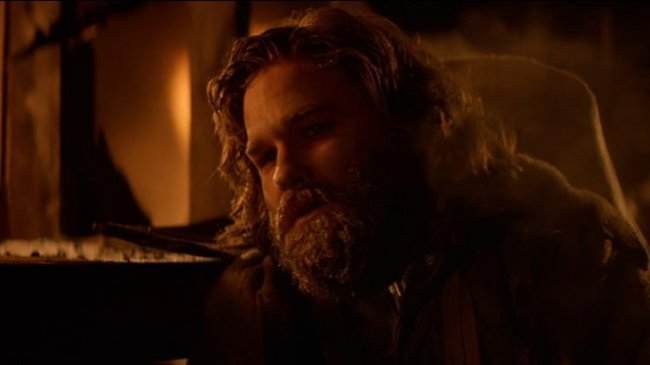
Another famous example, though perhaps less Gothic, is the 60s movie Butch Cassidy and the Sundance Kid. At the end, we do not really see what happens to the pair, we are left on a moment of heroic confrontation, where they stand up together to impossible odds. It is left to our imaginations exactly how that showdown goes down, although we can be fairly certain both Butch Cassidy and the Sundance kid are slain. If they had showed us the conclusion, a slow motion shot of them being gunned down, it would have been piteous and melodramatic. By holding back, leaving us on the crux moment where everything hangs in the balance, we feel the emotion of it all the more powerfully. This technique taps into the power of human imagination too. Our own version of what happens when that door bursts open will actually always be better than anything they could show us.
X
So, those are four frames which you can use to elicit catharsis for your Gothic ending, along with a foundation of loss & gain to weight it and make it land, to “earn” it. To recap, we have: the mirror, where you show the reader a mirror of themselves, the secret, where something is accomplished beyond the knowledge of the characters, the transference, where tragic knowledge is passed on, and the crux, where we end at a moment of climactic confrontation. There are many more frames, but I have gone on long enough, so these are perhaps best reserved for another essay
Exercise 1.2
Choose one frame and re-write your story through this prism. How does it change things? Do you need to add characters or take away certain scenes? Has it improved the overall emotional resonance of the scene?
X
Thank you so much for coming this far. I hope that this class has been of use to you. We’ve now reached the end of Part 3. I really enjoyed writing up these notes from my seminar, and I hope they are of use to you in some way. Thanks very much for taking the time to read it, it means a lot to me. In the future, there may be further classes, with more frames and techniques, depending on interest. If you do want more, feel free to leave a comment on my website, or to message me on Twitter.
If you feel that you have benefited from today’s class, then please check out my KoFi page, where you can donate $3 to “buy me a coffee” to help me keep producing free resources like this. Do not feel pressure to do so, but small contributions can go a long way for creators like me.
Until next time, my friends!

